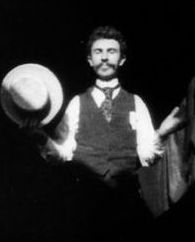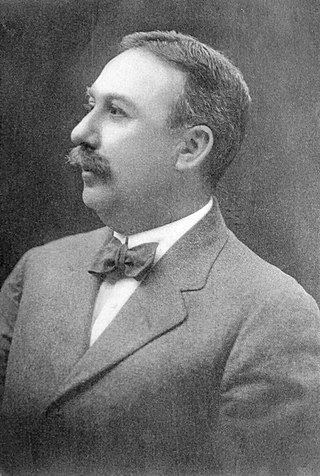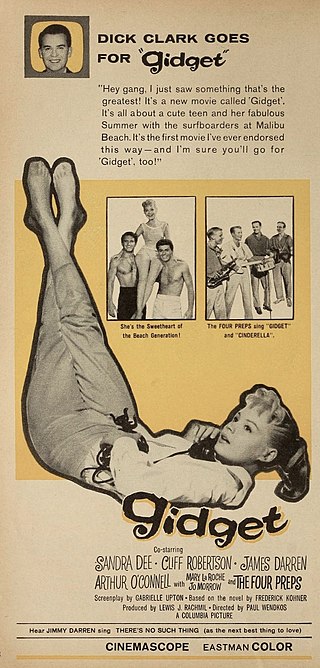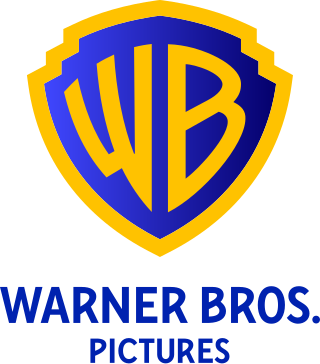Related Research Articles

A silent film is a film with no synchronized recorded sound. Though silent films convey narrative and emotion visually, various plot elements or key lines of dialogue may, when necessary, be conveyed by the use of title cards.

William Kennedy Laurie Dickson was a British inventor who devised an early motion picture camera under the employment of Thomas Edison.

35 mm film is a film gauge used in filmmaking, and the film standard. In motion pictures that record on film, 35 mm is the most commonly used gauge. The name of the gauge is not a direct measurement, and refers to the nominal width of the 35 mm format photographic film, which consists of strips 1.377 ± 0.001 inches (34.976 ± 0.025 mm) wide. The standard image exposure length on 35 mm for movies is four perforations per frame along both edges, which results in 16 frames per foot of film.

An extended play (EP) is a musical recording that contains more tracks than a single but fewer than an album or LP record. Contemporary EPs generally contain four to five tracks, and are considered "less expensive and time-consuming" for an artist to produce than an album. An EP originally referred to specific types of records other than 78 rpm standard play (SP) and LP, but it is now applied to mid-length CDs and downloads as well. In K-pop they are usually referred to as mini albums. Ricardo Baca of The Denver Post said, "EPs—originally extended-play 'single' releases that are shorter than traditional albums—have long been popular with punk and indie bands." In the United Kingdom, the Official Chart Company defines a boundary between EP and album classification at 25 minutes of maximum length and no more than four tracks.

The Kinetoscope is an early motion picture exhibition device, designed for films to be viewed by one person at a time through a peephole viewer window. The Kinetoscope was not a movie projector, but it introduced the basic approach that would become the standard for all cinematic projection before the advent of video: it created the illusion of movement by conveying a strip of perforated film bearing sequential images over a light source with a high-speed shutter. First described in conceptual terms by U.S. inventor Thomas Edison in 1888, it was largely developed by his employee William Kennedy Laurie Dickson between 1889 and 1892. Dickson and his team at the Edison lab in New Jersey also devised the Kinetograph, an innovative motion picture camera with rapid intermittent, or stop-and-go, film movement, to photograph movies for in-house experiments and, eventually, commercial Kinetoscope presentations.

"Who's That Girl" is a song by American singer Madonna from the soundtrack of the 1987 film Who's That Girl. Written and produced by Madonna and Patrick Leonard, it was released in Europe as the soundtrack's lead single on June 29, 1987; in the United States, a release was issued the following day. In 2009, it was included on Madonna's third greatest hits compilation, Celebration. An uptempo pop song, "Who's That Girl" continued the singer's fascination with Latin pop, a genre she had previously explored on her single "La Isla Bonita". It features instrumentation from drums, bass, and trumpets, and has lyrics sung both in English and Spanish. While shooting for the film, then called Slammer, Madonna had requested Leonard to develop a song that captured the nature of her film character; the producer worked on a demo and, afterwards, Madonna added the lyrics and decided to rename the song, as well as the film, to "Who's That Girl".

A trailer is a commercial advertisement, originally for a feature film that is going to be exhibited in the future at a movie theater/cinema. It is a product of creative and technical work.

Edwin Stanton Porter was an American film pioneer, most famous as a producer, director, studio manager and cinematographer with the Edison Manufacturing Company and the Famous Players Film Company. Of over 250 films created by Porter, his most important include: What Happened on Twenty-third Street, New York City (1901); Jack and the Beanstalk (1902); Life of an American Fireman (1903); The Great Train Robbery (1903); The European Rest Cure (1904); The Kleptomaniac (1905); Life of a Cowboy (1906); Rescued from an Eagle's Nest (1908); and The Prisoner of Zenda (1913).

The Biograph Company, also known as the American Mutoscope and Biograph Company, was a motion picture company founded in 1895 and active until 1916. It was the first company in the United States devoted entirely to film production and exhibition, and for two decades was one of the most prolific, releasing over 3000 short films and 12 feature films. During the height of silent film as a medium, Biograph was U.S. most prominent film studio and one of the most respected and influential studios worldwide, only rivaled by Germany's UFA, Sweden's Svensk Filmindustri and France's Pathé. The company was home to pioneering director D. W. Griffith and such actors as Mary Pickford, Lillian Gish, and Lionel Barrymore.

William Nicholas Selig was a vaudeville performer and pioneer of the American motion picture industry. His stage billing as Colonel Selig would be used for the rest of his career, even as he moved into film production.

A film poster is a poster used to promote and advertise a film primarily to persuade paying customers into a theater to see it. Studios often print several posters that vary in size and content for various domestic and international markets. They normally contain an image with text. Today's posters often feature printed likenesses of the main actors. Prior to the 1980s, illustrations instead of photos were far more common. The text on film posters usually contains the film title in large lettering and often the names of the main actors. It may also include a tagline, the name of the director, names of characters, the release date, and other pertinent details to inform prospective viewers about the film.

Surf movies fall into three distinct genres:
A film studio is a major entertainment company that makes films. They may have their own privately owned studio facility or facilities; however, most firms in the entertainment industry have never owned their own studios, but have rented space from other companies. The day-to-day filming operations are generally handled by their production company subsidiary.
Thomas Jung is an American art director, graphic designer, illustrator, and storyboard artist. He is known for his movie poster art.

Motography was an American film journal that was first published in 1909 and ran until mid-1918. The magazine was published in 1909 and was originally named The Nickelodeon, but then changed its name to Motography in 1911. The trade journal was published monthly by Electricity Magazine Corporation, with offices in both New York and Chicago. Motography was one of the most popular American Film trade papers, and was read primarily by individuals in the film industry, such as movie directors and movie theater owners. In 1918, Martin Quigley bought Motography merging it with Motion Picture Herald.

Mondo was an American company known for releasing limited edition screen printed posters for films, television shows, and comics, as well as vinyl movie soundtracks, clothing and apparel, toys, and re-issues of VHS releases. Founded in 2004 as Mondo Tees, the company is a former subsidiary of the Alamo Drafthouse Cinema chain in Austin, Texas, and currently hosts a permanent gallery space there which features original artwork and custom posters.

The Right to Be Happy is an American silent film from 1916 that draws inspiration from Charles Dickens' 1843 Novella, A Christmas Carol. This film was Universal's first attempt at making a Feature film based on Dickens' novella. Throughout the silent era, it stood as the first and only feature film adaptation of A Christmas Carol by an American or foreign film company. The movie was directed by Rupert Julian and supported by a cast of Universal Bluebird players, including Rupert Julian, Claire McDowell, and Harry Carter.

Warner Bros. Pictures is an American film production and distribution company of the Warner Bros. Motion Picture Group division of Warner Bros. Entertainment. The studio is the flagship producer of live-action feature films within the Warner Bros. Motion Picture Group unit, and is based at the Warner Bros. Studios complex in Burbank, California. Animated films produced by Warner Bros. Pictures Animation are also released under the studio banner.

Karoly Grosz was a Hungarian–American illustrator of Classical Hollywood–era film posters. As art director at Universal Pictures for the bulk of the 1930s, Grosz oversaw the company's advertising campaigns and contributed hundreds of his own illustrations. He is especially recognized for his dramatic, colorful posters for classic horror films. Grosz's best-known posters advertised early Universal Classic Monsters films such as Dracula (1931), Frankenstein (1931), The Mummy (1932), The Invisible Man (1933), and Bride of Frankenstein (1935). Beyond the horror genre, his other notable designs include posters for the epic war film All Quiet on the Western Front (1930) and the screwball comedy My Man Godfrey (1936).
References
- ↑ Scott Myers "Reader question: What should be on a one sheet?". gointothestory.blcklst.com. 8 November 2017. Retrieved 22 July 2023.
- ↑ "One Sheet Poster". learnaboutmovieposters.com. Archived from the original on 25 February 2002.
- ↑ Kennedy, Adam (23 July 2019). "Thomas Edison and the Movie Poster". Art of the Movies. Retrieved 22 July 2023.
- ↑ John Parris Springer The Golden Age of Hollywood B Movies: Lobby Cards from the Bob Burke Film and Autograph Collection Max Chambers Library, University of Central Oklahoma, Edmond, Oklahoma, 13 April 2017
- ↑ Silver, Jonathan Derek (2007). "Hollywood's dominance of the movie industry : how did it arise and how has it been maintained?". PhD thesis. Queensland University of Technology . Retrieved 22 July 2023.
- ↑ Kennedy, Adam (24 February 2021). "What Is The Difference Between A Quad And A One Sheet Movie Poster?". Art of the Movies. Retrieved 22 July 2023.
- ↑ Lessig, Lawrence (2004). Free Culture: How Big Media Uses Technology and the Law to Lock Down Culture and Control Creativity. New York City: Penguin Group (USA). ISBN 1594200068 . Retrieved 22 July 2023.

- ↑ Gaines, Jane M. (9 November 2000). Contested Culture: The Image, the Voice, and the Law. Univ of North Carolina Press. p. 38. ISBN 978-0-8078-6164-6.
1909 ... Motion Picture Patents Company
- ↑ "24 Sheet Posters: how Outdoor Billboards are Made". Design. 53 (4): 86–87. January 1952. doi:10.1080/00119253.1952.10743187.
- ↑ Miller, Nancy (June 28, 2002). "One-Sheet Wonders". Entertainment Weekly. Archived from the original on 2012-02-11. Retrieved 2007-01-31.
- ↑ "Dwight Cleveland collection of posters". Margaret Herrick Library. Academy of Motion Picture Arts and Sciences. Retrieved 22 July 2023.
The Online Archive of California is a service of the UC Libraries, powered by the California Digital Library.
- ↑ "What Is a One-Sheet in Music?". LiveAbout. Retrieved 22 July 2023.
- ↑ Reverditto, Larissa. "Music One-Sheet: Ultimate 5 Point Checklist for Aspiring Musicians". Omari MC. Retrieved 22 July 2023.